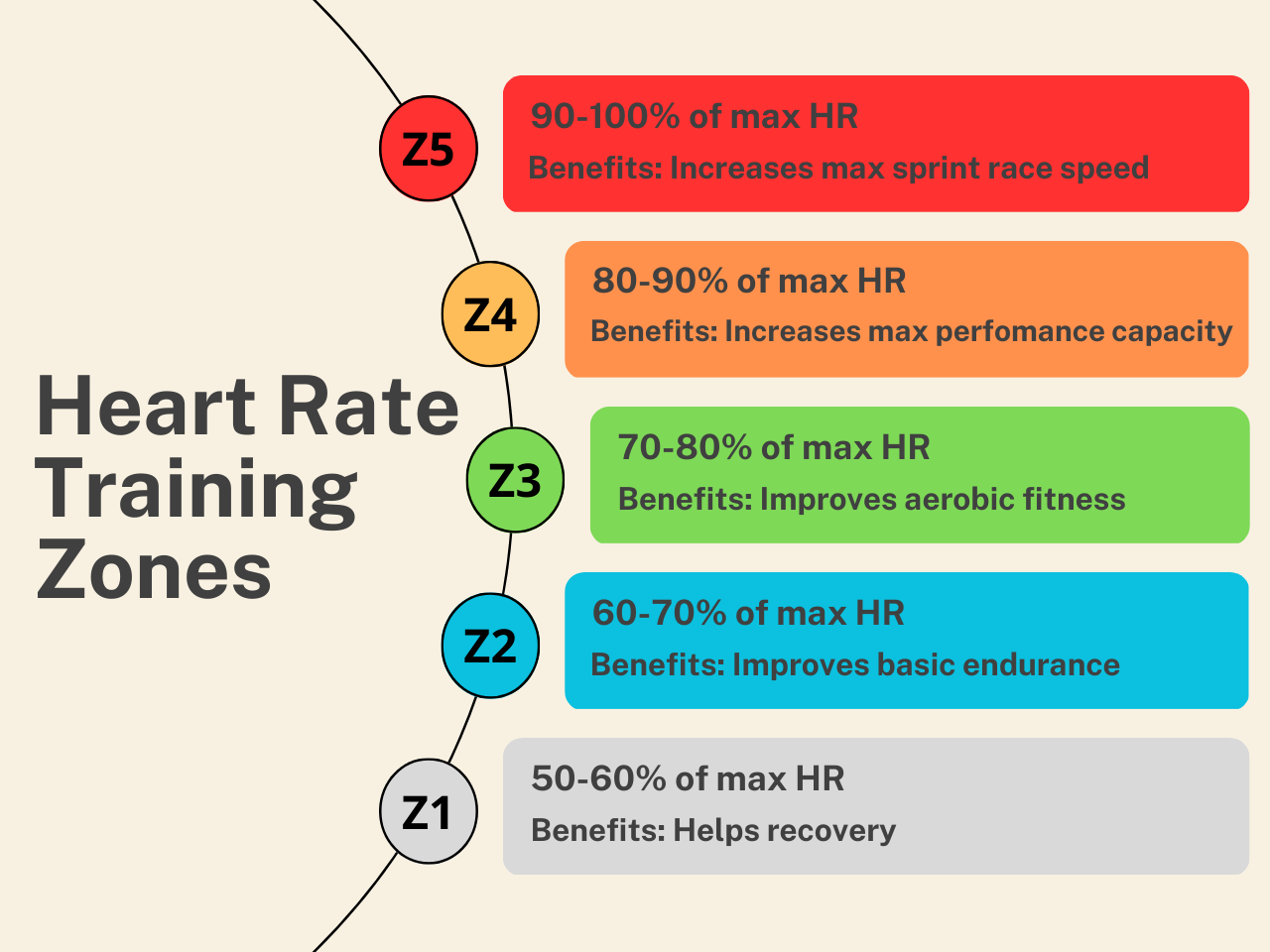In my recent post on Zone 2 Training, I shared that 60-80% of your cardio training should be in Zone 2, however, I also referenced other ‘zones’ of training which we will cover in this post. These zones provide unique benefits and shouldn’t be ignored. Today’s discussion will describe the benefits of zones 1, 3, 4, & 5 and will include various ways to add them to your exercise routine.
First, it’s important you understand how to calculate your estimated heart rate maximum (HRmax). I’m including the same explanation and diagram as in the Zone 2 Training post so it’s easily accessible throughout the rest of the article.
HRmax Calculator*: 220 – age; (so for me 220 – age 24 = 196 beats per minute (bpm) is my estimated HRmax).
*There are various other HRmax calculators out there that may be slightly more accurate, but we’ll stick to the above for simplistic sake!
To calculate your HR ranges, use the percentages included in the graphic above and multiply your HRmax by both the upper and lower limit percentages.
Example: My Zone 1 Range is 98 to 117.6 bpm, simply determined by multiplying my HRmax of 196 bpm by .50 and by .60 (196 x .50 = 98 and 196 x .60 = 117.6).
Zone 1 Training (50-60% of HRmax)
Many exercise physiologists don’t consider Zone 1 training a true form of structured exercise due to its low intensity. But, Zone 1 training remains critical as it contributes to one’s daily caloric expenditure, improves insulin sensitivity, and promotes positive well-being.
Keep reading with a 7-day free trial
Subscribe to Healthy in Bulk to keep reading this post and get 7 days of free access to the full post archives.




